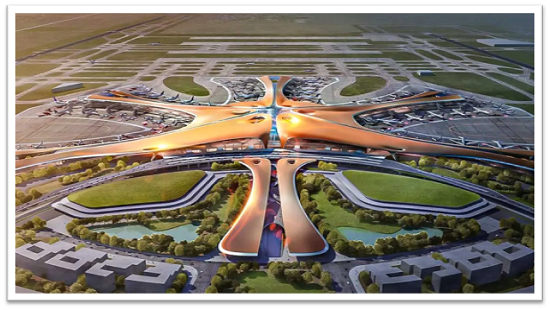
Navi Mumbai Airport to be Named D B Patil Confirms CM Devendra Fadnavis
In a significant move acknowledging local leadership and historic contributions, Maharashtra Chief Minister Devendra Fadnavis has confirmed that the upcoming Navi Mumbai International Airport will be named after the late farmer leader D B Patil, pending formal approval from the central government. The announcement comes just days before the airport’s scheduled inauguration on October 8 and signals a constructive resolution to ongoing local demands. D B Patil, who played a pivotal role during the land acquisition process for Navi Mumbai, led efforts that culminated in the landmark 12.5% developed land scheme for displaced persons, ensuring equitable benefits for the affected communities. Naming the airport in his honor is both a symbolic tribute and a recognition of the decades-long struggles and contributions of local farmers and leaders.
The decision highlights the state government’s commitment to honouring historical leadership while balancing modern infrastructure development. Following Fadnavis’s assurance, local leaders in Raigad and Thane districts suspended a planned protest march set for October 6, demonstrating confidence in the state’s initiative and signalling a collaborative approach toward urban development and public sentiment. The airport, envisioned as a modern hub for international and domestic air traffic, represents a transformative milestone for the region, connecting Navi Mumbai more efficiently with global destinations while promoting economic growth.
Historical Significance and Symbolic Recognition
D B Patil’s contributions during Navi Mumbai’s formative years remain widely acknowledged. As a leader of the agitations during land acquisition, he successfully advocated for the rights of displaced farmers, resulting in one of the most equitable compensation schemes of its time. The proposed renaming of the airport serves not only as a tribute to Patil’s leadership but also as an acknowledgment of the foundational role local communities played in the city’s development. Such recognition reinforces the importance of inclusivity and historical memory in the governance and planning of large-scale infrastructure projects.
Formalities and Government Coordination
While the state government has confirmed the proposal, the formal renaming requires approval from the Union government. Fadnavis clarified that the central government is in the process of finalizing a policy for naming such infrastructure projects, which has temporarily delayed the formal declaration. Once completed, the airport will officially be designated as “Loknete D B Patil Navi Mumbai International Airport.” This step ensures alignment with regulatory frameworks while allowing states to honor notable figures in their respective regions, thereby setting a precedent for future infrastructure naming decisions across India.
Support from Local Leaders and Communities
The proposal has garnered strong backing from local representatives and community organizations. Panvel MLA Prashant Thakur emphasized that the state legislature had unanimously supported the resolution to name the airport after D B Patil. Similarly, Bhiwandi MP Suresh Mhatre highlighted Prime Minister Narendra Modi’s assurance that the state’s decision would prevail once the new naming policy is implemented. Community organizations, such as the Agri Koli Youth Foundation, have expressed trust in the government’s commitment, suspending planned protests while monitoring progress closely. This collaborative engagement underscores how infrastructure development can coexist with respect for historical contributions and local sentiment.
Economic and Regional Implications
The inauguration of Navi Mumbai International Airport represents a transformative development for the state’s aviation and economic landscape. Strategically located to ease congestion at Mumbai’s Chhatrapati Shivaji Maharaj International Airport, the facility is expected to enhance connectivity, attract investment, and create employment opportunities across sectors including aviation, logistics, tourism, and hospitality. Naming the airport after D B Patil not only celebrates regional heritage but also reinforces a model of governance that integrates community recognition with forward-looking development objectives.
Conclusion A Harmonious Blend of Heritage and Modernity
The proposed naming of Navi Mumbai airport after D B Patil reflects a thoughtful blend of historical respect and contemporary urban planning. By acknowledging the efforts of a key leader while inaugurating one of India’s most ambitious aviation projects, the state government exemplifies leadership that is inclusive, responsive, and visionary. As the airport prepares to welcome its first flights on October 8, it stands as a symbol of connectivity, progress, and recognition — honouring the past while charting a pathway for the region’s future growth and development.




